
Writing an SEO-friendly article requires understanding the basics of SEO and excellent writing skills. It takes a lot of experience to make sure your readers are intrigued. The structure of your blog post plays an important role, so it is wise to keep it simple and enjoyable.
Search engine results pages (SERPs) are crucial for bloggers. Being listed on the first page of a Google search is no cakewalk. Readers will share the article with others if they like your content. This will help increase your search engine ranking.
Thus, improve your writing abilities if you need to improve your rankings. Start with these tips on how to write SEO-friendly blogs.
This post offers tips for ensuring readable and SEO-friendly blogs. These two objectives should consistently go together since easy-to-digest blogs will get you more readers.
There are no shortcuts to digital success. According to Website Muscle, it takes anywhere between 90 to 180 days to get to the first page of Google.
Take a look at this exciting experiment that Ahrefs ran.

It’s safe to say that consistently SEO-optimized web content (for at least three months) is the only way to get good results. In this article, we list down blog SEO tips to make your content more SEO-friendly.

Tips on How to Write SEO-friendly Blog Posts
1. Identifying your topic and keyword research
Before writing an SEO-friendly article, think about the message you are trying to convey to your audience. Ask yourself the following questions and try to get an answer.
- What would you like to tell your readers?
- What’s the motivation behind your article?
- What do you need your readers to do once they read the article?
Once you get the answers to these questions, you will have a good mental image of the article’s topic. Once you have settled on the topic, the next step is to find the targeted keywords related to that topic.
A content writer can use different keywords to rank higher on search engines. The two main keywords that you need to be focusing on when writing SEO-friendly blogs are the primary and secondary keywords.
The primary keyword is the main keyword you should use to structure the article. The secondary keywords are those that support your primary keyword.
For example, let’s say you are writing an SEO-friendly article about a bike. Then your primary keyword will become “bike.” And your supporting keywords or the secondary keywords can be words like “mountain,” “all-terrain,” “off-road,” and “lightweight.”
Select one primary keyword by using online keyword research tools like,
Go with a low competition word or phrase as your primary keyword for a higher chance of success. Once you choose your primary keywords, select a couple of secondary keywords related to the primary keyword.
2. Plan your blog’s length and structure it
The length of your blog is a significant factor in writing SEO-friendly blogs. For 2022, the latest findings suggest that the ideal blog length is 1700 to 2400 words, according to Hookagency.com.
However, this is debatable and not a constant. So it’s good to research blog length often to ensure you are not going over or falling short. If you’re unsure how long your blog post should be, type in your keyword in Google, look at the top-performing results, and check the average length of the posts. Try and keep the length of your blog to somewhere within the ballpark.
No matter how long your blog is, keep each paragraph’s length to a maximum of 3 to 5 sentences. Use bullet lists and numbered lists as often as possible. Most importantly, keep the text simple when writing SEO-friendly blogs. Aim for a readability score of 6 on the Hemingway App.
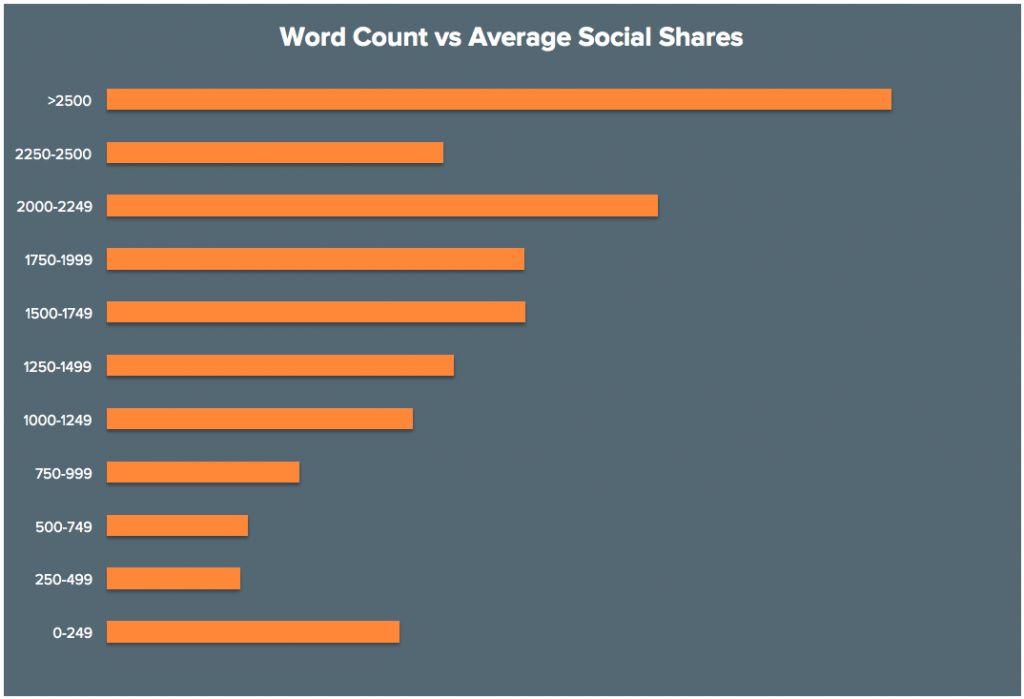
You have to have plagiarism-free content with top-notch grammar. On that note, it often gets difficult to use primary keywords without disturbing the sentence’s syntax. It’s okay to tweak some of your keywords for semantic accuracy.
For example, if your keyword is “omega 3 supplement benefits,” it’s okay to use “benefits of omega 3 supplements.” Google is smart enough to work through these necessary changes.
Check the sample below.
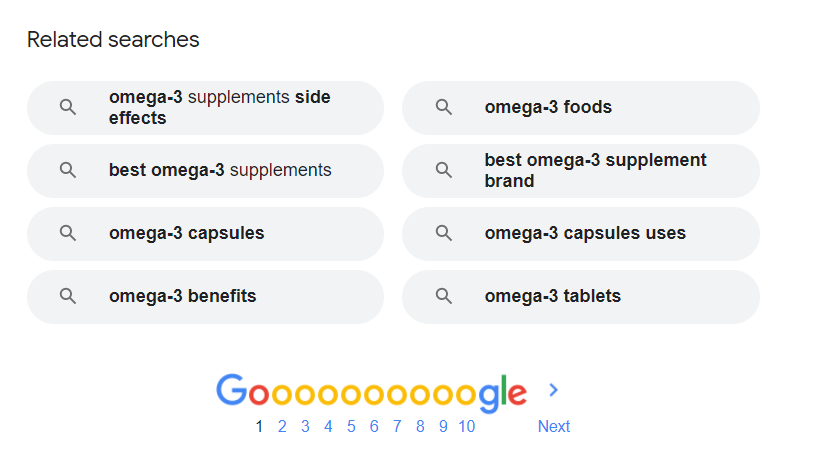
3. Understand keyword placement
Another tip for writing SEO-friendly content is ensuring your keywords are well-placed. Ensure that your primary keyword is sprinkled throughout the piece and not stuffed in one section.
Use keywords in
- The title of your blog
- Headings and subheading
- The first paragraph, ideally the first 50 words
- At the end of the page
4. Understand keyword density
You have your primary keyword. But how many times do you use it in an SEO-friendly blog? The ideal keyword density is 1% to 2%, roughly translating to one to two times every hundred words. To check keyword density, you can use these free online tools.

What about secondary keywords? Choose a maximum of four to five keywords and use them once throughout the piece. You can use up to six or seven secondary keywords for lengthier blogs.
5. Use category and tags.
Another SEO tip for blogs is to note the tags and categories. Tags and categories are taxonomy systems that help organize your blog section.
Each blog is also associated with two or more tags. In the example below, the tags associated with this blog are “content writing” and “content writing services.”
For example, here’s how Pepper Content organizes its blog into categories.

You can associate each blog with one or two categories. A well-structured blog section is well-appreciated by Google’s crawlers.
Moreover, readers will notice the H1 tag whenever they enter your website. The H1 tag is nothing but the title of the blog. Write a catchy and engaging H1 tag to capture the reader’s attention. The H1 tag should also tell the reader what exactly will be in the blog and include a long-tailed keyword.
Along with the title and H1 tag, it is vital to have supportive subheadings. The subheadings structure and give your blog a smooth flow. Always remember you do not have to use keywords in your subheadings. You need to add engaging subheadings and entice the reader to continue reading.
6. Use the primary keyword in the SEO title
The SEO title is a secondary title that’s different from the actual title of your blog. SEO titles are HTML tags used by page crawlers to index the website. Too much jargon? SEO titles or meta titles appear as the title of your article when someone searches for you on Google.
For example, here’s a title that appears from WebMD for the keyword “omega 3 supplements”:

The SEO title is: Omega-3 Fish Oil Supplements: Benefits, Side Effects, and Uses
Clicking on the page reveals a different blog title.
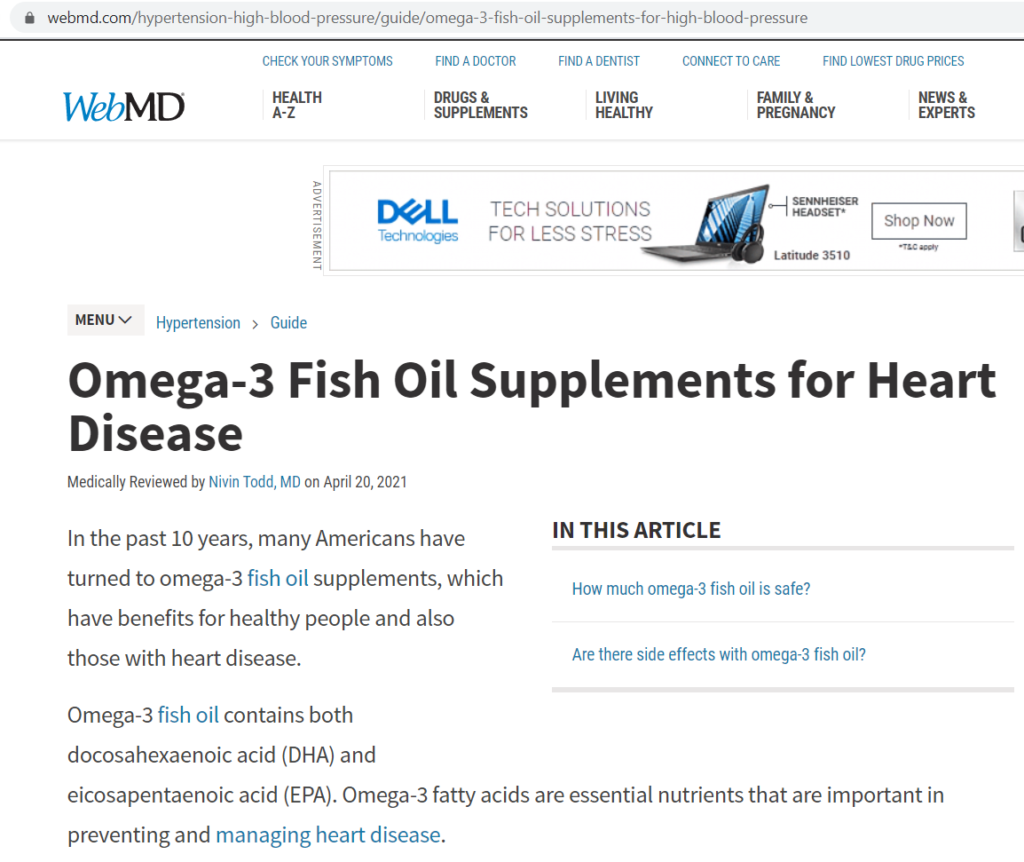
So, the SEO title is what the user can see on Google results. The meta title’s function is to provide a quick summary of what a reader can find on your blog. Ensure that your SEO title includes the primary keyword and is within 55 characters as Google truncates lengthier titles. It should also be catchy so that people are encouraged to click.
7. Use the primary keyword in the meta description
Much like the meta title, the meta description appears as a glimpse of your blog on Google. The line that appears below the title is the meta description. Optimize them well in an SEO-friendly article.

If you don’t write one yourself, Google will automatically choose a snippet. But it would be a missed opportunity to use the primary keyword if you don’t set your meta description.
8. Use link-building strategies
Make sure you interlink your blogs. For example, if there’s a related blog that users may be interested in, don’t be afraid to plug it into your content. This helps with SEO.
Here’s an example:
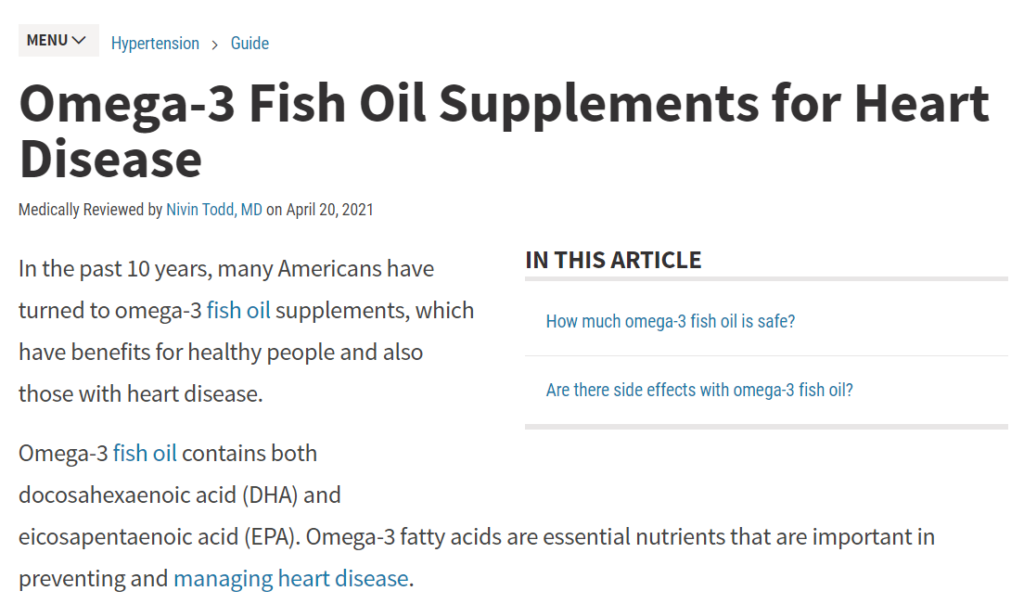
In this WebMD article, the words “fish oil” and “managing heart disease” are hyperlinked and appear blue. Clicking on them takes you to another blog related to the keyword on the WebMD website itself.
You can also use outbound links (links that redirect the user to another website) to back your statistics and sources. Both inbound and outbound links should be used sparingly, not more than one to two times each.
If you can get a friendly brand to link to your website within their blogs, that helps a lot too. You can return the favor in the same manner.
9. Use transition words
Transition words help individuals filter through your content and comprehend the connection among sentences and sections. For instance, suppose three explanations behind individuals purchasing your item.
It would be best to utilize signal words like: “above all else;” “furthermore;” “lastly.” Likewise, words like “in any case,” “also” and “for instance” clearly your audience a sign. Therefore, transition words are vital to giving your content a proper structure and making your content more SEO-friendly.
10. Use synonymsto mix up your word choice.
To keep your guests engaged, it is critical to use different words as a content writer. Wordplay is enjoyable to use and can assist you with keeping your audience engaged. You can always look at online tools if you have trouble coming up with other words.
One of the tools is Thesaurus.com, and you can type any word in it to discover new equivalent words to upgrade your content.
11. Add images and videos.
When creating good content, it is crucial to understand that an article is not just about using words and sentences. There are a lot of other things that give life to your article. You will need to add real-life examples to help the reader relate to the article’s central theme.
The best way to produce SEO-friendly content is to add images and videos to your posts. It would help if you habitually put pictures or videos in your introduction and in between subheadings.
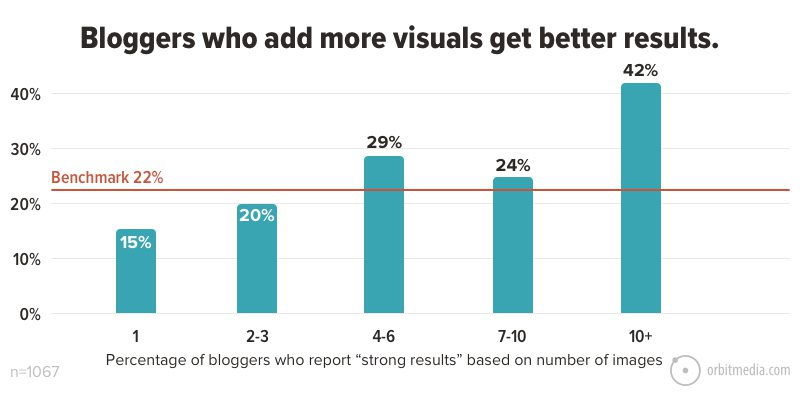
Ensure that the images are free from copyright claims. You can get non-copyright stock images and videos at Pixabay, Unsplash, or Pexels. Another blog SEO tip is to make your video, upload it on YouTube and then link that video to your blog post.
The Final Word
Write for humans. Not search engines.
Although the blog SEO tips given above are purely technical, remember that ultimately your readers are humans. You’re only going to get clicks if you write lucid content that provides value to your patrons. Remember to stay creative and snappy, and don’t be afraid to inject a bit of humor.
Long gone are the days when it was easy to write an SEO-friendly article and get a high rank on Google. With the rise in competition, this has become a task. These days, quality written content plays an influential role as long as it is optimized for SEO.
Furthermore, great articles additionally prompt more connections, offers, tweets, and returning guests to your site. You can take multiple approaches to amplify the SEO friendliness of your article. However, the main thing is to write great articles! We hope that you can incorporate these tips on how to write SEO-friendly content in your next blog post.
Key Takeaways
- To write SEO-friendly blogs, focus on content relevance, keyword optimization, and website navigability. Also, ensure that your content is easily shareable.
- SEO for blogs involves including an adequate sprinkling of keywords to rank on search engines. Keywords make your content more search-friendly so users can easily come upon it.
- To write an SEO-friendly article, focus on primary keywords. However, include synonyms and secondary keywords to make your content stand out.
- Another blog SEO tip is to optimize the length of the blog and include keywords in titles, meta titles, meta descriptions, anchor texts, alt texts, etc.
- You must also focus on keyword placement and density to write SEO-friendly blogs. Avoid keyword overstuffing. It will make your content quality watery, and it won’t be suitable to rank on search engines. Your keyword placement should be organic.

FAQs
To write SEO-friendly content, follow these steps,
– Have a clear blog outline
– Structure your SEO blog post
– Pick a catchy title
– Use correct types of headings
– Keep your content brief and to-the-point
– Add relevant links
– Reel in keywords and key phrases
– Optimize the blog post length
To make your writing more SEO-friendly, follow these steps,
– Conduct a thorough keyword research
– Structure your SEO blog post
– Formulate SEO-friendly URLs
– Optimize meta title and description
– Optimize graphics
SEO-friendly writing that helps in high search engines rankings. Some blog SEO tips include incorporating the right keywords, key phrases, images, word count, etc. all of these factors add to a well-optimized webpage.
Here is a checklist you can save and use when you start writing SEO-friendly blogs:
– Research keywords
– Determine content types and tiles
– Monitor the length of the articles
– Study what content exists on those titles
– Review the searches, results, and ‘people also ask’ sections
– Write an appropriate article
– Give meta information
– Add images, infographics, links, and review headings
Try to make your keyword placements organic. Keyword optimization and content relevance are the two pillars to note when writing SEO-friendly content. Search engines won’t rank watery quality or non-relevant content. If you stuff keywords in your content, it won’t be readable. Search engines always focus on improving user experience.
Latest Blogs
Explore how Google’s 2025 AI search updates triggered ranking chaos. Learn actionable strategies to adapt your SEO for AI Overviews, zero-click searches, and SERP volatility. Stay ahead now.
Learn how to rank on AI search engines like ChatGPT, Perplexity, and Gemini by optimizing your content for authority, structure, and relevance. Stay ahead in AI-driven search with this strategic guide.
Explore the best healthcare SEO services for your medical practice. Improve online visibility and effectively reach more patients in need of your services.
Get your hands on the latest news!
Similar Posts

Content Analytics
8 mins read
Google I/O 2025: AI Search Shake-Up & Ranking Volatility

Artificial Intelligence
5 mins read
Top AI Blog Writing Tools for Website Monetization

Blogging
10 mins read